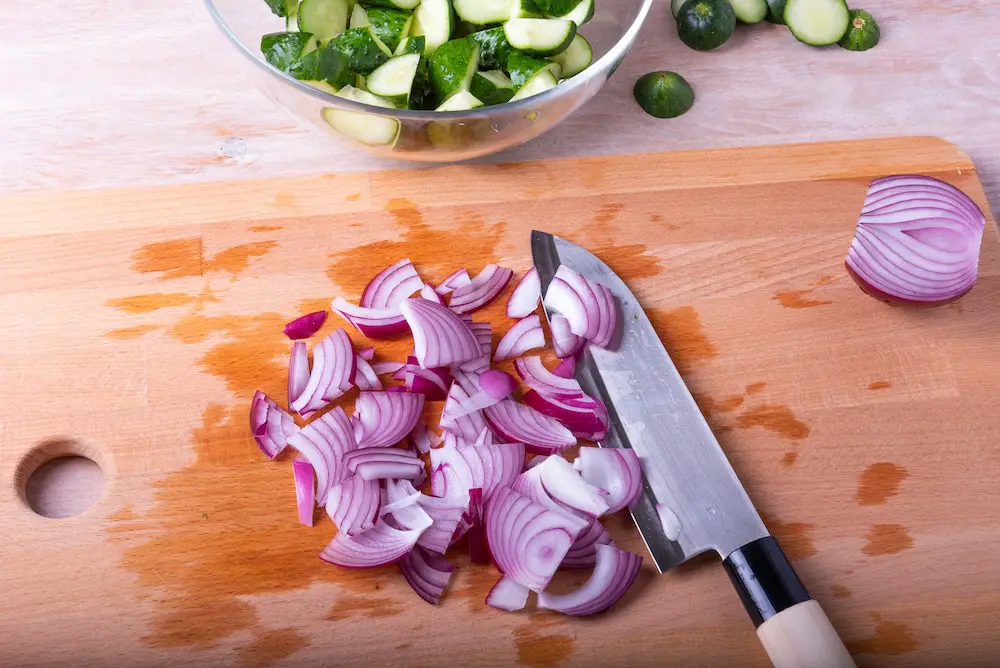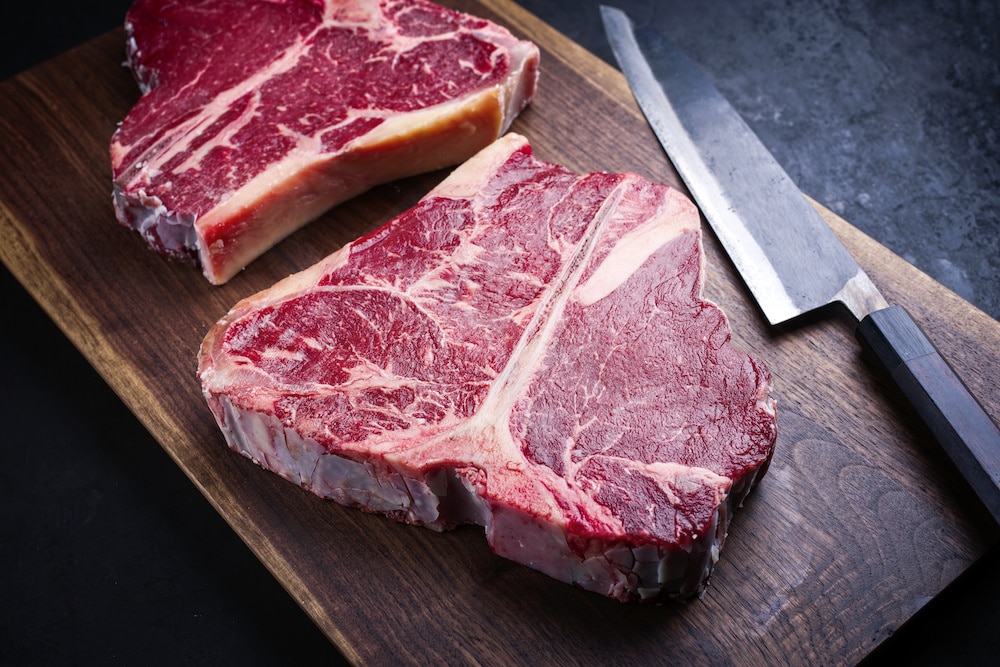When it comes to Japanese knives, you’ve got plenty to choose from.
Among these choices, though, two knives are constantly pitted against each other—the Santoku vs Gyuto.
If you’re new to this industry, we understand what a dilemma it can be to decide which one is the perfect knife for you.
To lend you a helping hand, we decided to talk about what each of these knives has to offer.
Then, with that knowledge, you’d be able to make an informed decision and pick the right one.
What Is a Santoku Knife?
Looking at a Santoku knife, you will immediately realize that it is slightly larger than multi-purpose kitchen knives.
Though it is shorter than Chef knives, it has a wider and flatter blade.
You’ll notice that the blade is fairly blunt or has a slightly rounded tip too.
For this reason, it isn’t really well suited for piercing through food items.
What’s more, there is no curve on the blade, so you cannot rock it back and forth as you slice.
Instead, the straight and long blade proves to be useful for those exceptionally long cutting strokes.
The wider blade is also great for transferring chopped ingredients.
All of these qualities make the Santoku knife an excellent tool for chopping.
What Do You Use It for?
Like many Japanese knives, the Santoku is a hard, thin, and extremely sharp knife.
Some of these knives come with an asymmetric grind, which means you can use them either in the left or right hand.
Other Santoku knives come with a hollow grind, offering more sharpness.
It was only recently that Santoku knives became popular for use in home kitchens.
Hence, many knife manufacturers have only started making them in a variety of different options.
As a result, you will be able to find a Santoku knife with varying metal constructions, lengths, grinds, and handles.
There are Santoku knives that come with rounder blades ideal for rocking cuts.
However, purists argue that those knives cannot be considered a real Santoku.
Pros:
- Works well with most foods
- Has a steady feel
- Made from a long-lasting material
Con:
- Not a beginner-friendly knife
What Is a Gyuto Knife?
Gyuto is basically the Japanese-style Chef knife, a response to the demands from the West for kitchen knives.
Back in the day, Japanese blacksmiths were well-known for producing some of the best weapons and katanas.
With time, the demand for these products started declining, which led these blacksmiths to change their ways and make kitchen knives instead.
In a typical Japanese kitchen, cooks make use of knives that are single-beveled.
However, the western versions of the Gyuto have begun to gain more popularity.
Gyuto knives are in the same shape as a western chef’s knife and are used in the same manner.
It is almost impossible to tell the difference between a slightly thicker Gyuto knife with a double-beveled and western-style handle from a Chef’s knife from the West.
In a nutshell, a Chef’s knife and a Gyuto knife are essentially the same.
Pros:
- Wide blade offers easy chopping
- Easy transfer of food
- Comes with a pointy tip
- Suitable for rock chopping
Con:
- Can be really expensive

Santoku vs Gyuto: How Do They Differ?
As mentioned earlier, the Gyuto knife is just a fancier term for a Japanese-style Chef knife.
Hence, comparing a Santoku and a Gyuto knife is almost the same as finding the differences between a Santoku and a Chef knife.
Gyuto knives are a little better than an all-purpose knife, thanks to their belly for rocking and the piercing tip.
On the other hand, a Santoku knife is the kind that you can use for a ton of kitchen tasks.
It is also important to note that the Santoku is almost always cheaper than the Gyuto.
Which One Should You Choose?
Now that you know exactly what each of these knives is and their differences, it is time that we consider their merits.
In our opinion, a slightly shorter Gyuto knife will be a better option compared to a Santoku knife in most cases.
If you already own a Chef knife, then picking a Santoku knife to add to your arsenal may be a better idea, as it can help you prep certain kinds of foods.
If you are someone who cuts a lot of vegetables such as onions, the faster, smaller, and dedicated Santoku will make your work easier and quicker.
As mentioned earlier, Santoku knives also tend to be cheaper than the Gyuto.
In that case, picking a Santoku is the better option, especially if you are on a tight budget and need a superior-quality Japanese knife.
That said, if you are particularly in need of a knife that’s long and comes with a pointed tip, as well as one capable of rocking, you shouldn’t even consider the Santoku.
This is the job for the Gyuto knife, as you will not find any of these features in most Santoku knives.
Both of these knives come with their own set of advantages and disadvantages; our best answer is to pick both if you can.
There is no reason why your knife collection cannot have two beautiful, supreme-quality Japanese knives meant for different tasks.
You can use the Gyuto for tasks that require a longer blade and the Santoku for quick chopping jobs.
This way, you will get the best of both worlds.
Just ensure that you maintain the knives properly so that they serve you well for a long time.
Picking Your Next Go-To Knife
When it comes to choosing between a Santoku vs Gyuto, it all comes down to your needs and preference.
Each of these knives serves a purpose that is different from the other. Therefore, our recommendation would be to find a way to get both.
There will come one point when you find a use for both of them.
Still, we understand that this may not be possible for everyone.
If you really have to pick just one, decide based on your needs, chopping style, and budget.
This way, you will find one that you are perfectly compatible with.

